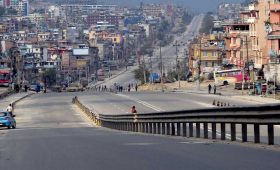Tiger Safari in Nepal is a significant tour package available generally in Chitwan and Bardia National Parks. Jungle Guides are aware of the tiger’s habitat and the place where they can be spotted more frequently. Especially this jungle tour combines with the elephant back-ride to wander around the dense forest conquering the world’s most amazing creature. But the tigers are not easily visible by everyone. There are many consequences that still make fulfillment of the dream of your lifetime. Perhaps it may depend on your luck also. In comparison between Chitwan and Bardia, tourists visiting Bardia National Park have more successful records to witness the tigers.

The forests of Chitwan and Bardia host tigers including the endangered one-horned rhinos, pangolin, python and some elusive birds. So, the experience of observation of rhinoceros is a bonus to the wildlife safari tour in Nepal. The jungle safari tour is more confined to the jungle activities further with some cultural attractions of the area. Local village tour to watch the lifestyle and ethnicity of the people around the national park make the trip more interesting. There are packages available for 3 to 5 days jungle safari tours to Chitwan and Bardia. Hence the jungle safari tours are ideally suitable for family with children and honeymoon couples. Students and researchers also feel like a paradise due to their great biodiversity.
Popular Tour Packages for Jungle Safari in Nepal

Tigers (Panthera Tigris) are a symbol of power and are mystical and majestic creatures. They are an umbrella species and symbolize the plight of wildlife across Asian ecosystems. Tigers are also deeply embedded in the cultural history of Asia (Lumpkin, 1991). At the turn of the 19th century the global tiger population was estimated around 100,000 individuals, distributed from the forests of eastern Turkey and Caspian region of western Asia, all the way to the Indian sub-continent, China, Indo-China, south to Indonesia, and north to Korean Peninsula and Russian far-east (Sunquist, 1981).
Unfortunately, human activities such as habitat destruction, loss of prey, sport hunting, poaching and illegal trade in tiger parts resulted in drastic decline with the global population declining to as low as 3,200 by 2010 (GTRP 2010). Once distributed widely, tigers are now confined to only 7% of their historical range in 13 countries of the world. To address this global tiger crisis, the Global Tiger Summit 2010 held in St. Petersburg, Russia where the heads of Governments of the 13 tiger range countries committed to double wild tiger populations until 2022 and endorsed the Global Tiger Recovery Program (GTRP). The Government of Nepal committed to double Nepal’s tiger population by 2022 and has been implementing the National Tiger Recovery Program (NTRP) since 2010.

Tiger Conservation History in Nepal
The history of tiger conservation in Nepal dates back to as early as the 1930s when the forests in the Terai region of Nepal were continuous from east to west and were popularly known as ‘charkose jhadi’ (miles of forest). These forests had maintained as a defensive frontier to deter invasion from the British India during the 19th and 20th centuries (Mishra and Jefferies, 1991). The Terai forests were famous as hunting grounds of the ruling class and visiting dignitaries; several anecdotal records describe large-scale hunting expeditions in Nepal.
During 1950s, the Government of Nepal undertook a malaria eradication campaign and initiated a massive resettlement program in Terai which resulted in clearing of large tracts of forest and the destruction of much wildlife and habitat. Later realizing the urgency to protect wildlife, Government of Nepal enacted the National Park and Wildlife Conservation Act- 1973 which envisioned the creation of national parks and other protected areas. Then Chitwan National Park became the country’s first national park established in the same year.
Prominent Tiger Habitats in Nepal
- Chitwan National Park
- Bardia National Park
- Banke National Park
- Parsa Wildlife Reserve
- Shuklaphanta Wildlife Reserve
Send us your query, should you have a desire to encounter with a Tiger in its natural habitat:
(Profile Picture and Part of Text Courtesy: Status of Tigers and Prey in Nepal: DNPWC, 2014)




